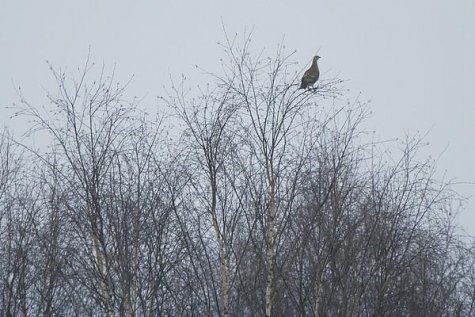Hens in treetops
Photo: Arne Ader
Translation: Liis
Grouse hen or greyhen
Grouse; Black grouse Teder Tetrao tetrix
Now that snow has covered the ground grouse hens can be seen more often as they spend the winter living in flocks.
Generally we won’t see grouse hens inside large birch forests. It is more likely to see the groups on the verges of the birch or mixed forests surrounded by open land, or in sparsely wooded birch stands in bog landscapes or wooded meadows. The main winter food is generally birch catkins and buds.
Grouse hens are about the weight of domestic hens – around a kilo. Back plumage is brown with bands of patches that blend in well with the few colours in nature, underparts and tail a little lighter and show more of the band pattern. Modest and elegant.
Grouses are indigenous in our nature and adapted to the severe winter conditions. In autumn horny fringes grow on the legs of grouse; the ”hairy feet” disappear in spring in the forest. The area of the feet covered with the horny fringes increases: the load-bearing capacity in snow will be better (as with snowshoes) and it is more efficient for digging shelters in the snow for cold nights.
The young birds from this summer keep company with the hens until the start of the springtime grouse matings. The grouse cock already wears the iridescent splendid breeding plumage since September of last year, and meets the hens accidentally – just in passing.
Grouse observations: LINK









